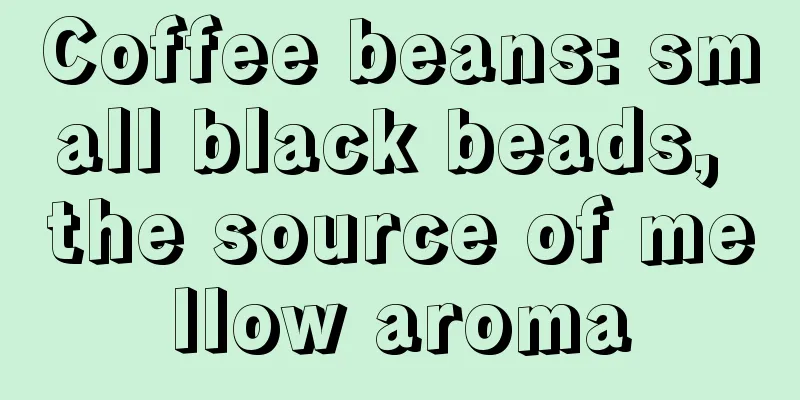Lightly roasted coffee beans, perfect with espresso machines

The perfect match between lightly roasted coffee beans and espresso machinesCoffee is one of the most popular drinks in the world, and espresso is known for its rich taste and unique flavor. When making espresso, it is very important to choose the right coffee beans. Lightly roasted coffee beans complement espresso machines and can bring out a richer and more complex taste. What is a light roast?Light roasting means that the coffee beans are slightly heated at a lower temperature. Compared with deep roasting, this method retains more of the natural aroma and flavor substances contained in the original coffee beans. Due to the lower temperature, the coffee beans also maintain a certain degree of fullness and smoothness. Why choose light roast?First of all, light roasting allows you to truly taste the flavor of coffee from different origins, different varieties, and different processing methods. Light roasting retains the original characteristics of coffee beans, allowing each cup of coffee to show a unique personality. Secondly, lightly roasted coffee beans are fuller and smoother. Due to the lower temperature, the oil inside the coffee beans is not completely released, which allows the espresso machine to better combine with water molecules during the extraction process, producing a richer and more complex taste. The perfect combination of Italian machine and light roastThe espresso machine is one of the most ideal tools for making rich and smooth coffee. It uses high pressure to pass water through the tightly compacted and finely evenly distributed grounds in the filter basket, extracting the maximum amount of soluble substances in a very short time. When using lightly roasted beans to make Italian coffee, this method retains the original flavor and aroma and does not completely release the oil. The coffee extracted under high pressure is fuller, smoother, and can also show more layers of flavor. How to choose light roasted beans?When choosing light roasted beans, you can consider the following factors: The first is the origin. Coffee beans from different origins have different characteristics and flavors. For example, coffee from Colombia usually has a soft and balanced taste, while Ethiopia is known for its floral and fruity flavors. The second is the variety. Arabica and Robusta are the two most common coffee varieties. Arabica is generally of higher quality, lower acidity and more complex flavor; Robusta is more bitter and contains a higher degree of oil. Finally, there is the processing method. In addition to light roasting, there are other processing methods such as medium roasting, deep roasting, etc. Each processing method will have different effects on the coffee beans, so you can choose the appropriate processing method according to your preferences. ConclusionThe perfect match between lightly roasted coffee beans and an espresso machine can bring a richer and more complex taste. By choosing the right origin, variety and processing method, you can make a cup of Italian coffee with a full taste and unique flavor at home. Whether it is to start the day in the morning or enjoy a moment of rest in the afternoon, such a perfectly matched cup of coffee can bring you pleasure and satisfaction. |
<<: Recommended coffee beans for raw coconut latte
>>: Coffee beans: food or drink?
Recommend
The world's top three coffee bean varieties revealed
The world's top three coffee bean varieties r...
Top 10 coffees: Taste the world's best hot drinks
Top 10 coffees: Taste the world's best hot dr...
Top 10 exquisite coffees, the mellow taste will make you intoxicated
Top 10 exquisite coffees, the mellow taste will m...
The world's top coffee beans ranking: the perfect combination of taste and aroma
Coffee is one of the most popular drinks in the w...
Is it good to eat too much coffee beans?
Nutritional content of coffee beans and their eff...
What skills should I learn to open a coffee shop?
Technology Needed to Open a Coffee Shop Opening a...
Coffee exploration, a journey to find the best brands
Abstract: This article is a record of a coffee ex...
Starbucks coffee beans storage
Characteristics and preservation tips of coffee b...
The world's most famous coffee rankings, a journey to explore famous coffee varieties
This article introduces the ranking of the world&...
The secret to drinking coffee without insomnia
The secret to drinking coffee without insomnia Co...
Coffee Bean Grinder
Unveiling the Mystery of Coffee Bean Grinding Mac...
Freshly ground coffee ranking: TOP 10 best tasting freshly ground coffee beans
Top 10 Best Tasting Freshly Ground Coffee Beans A...
Starbucks coffee beans: varieties and flavors explained
Starbucks coffee beans: varieties and flavors exp...
Will high school students really get fat and stop growing taller if they drink coffee?
Whether drinking coffee will make high school stu...
Lavasa coffee beans: pure taste, excellent flavor!
Lavasa coffee beans: pure taste, excellent flavor...









